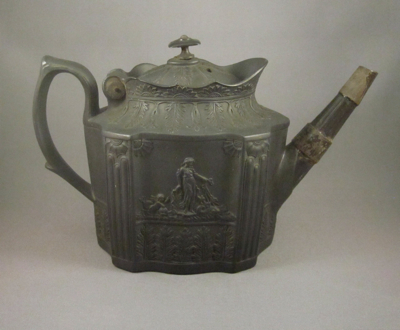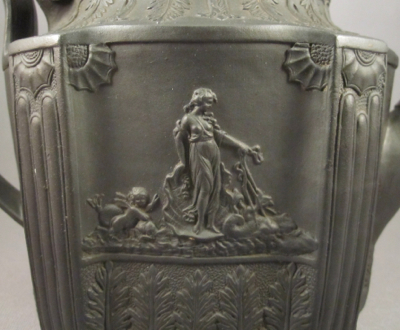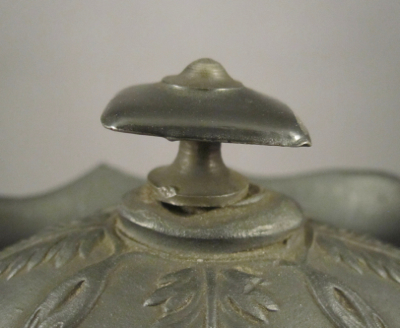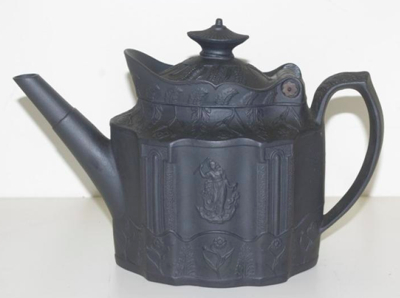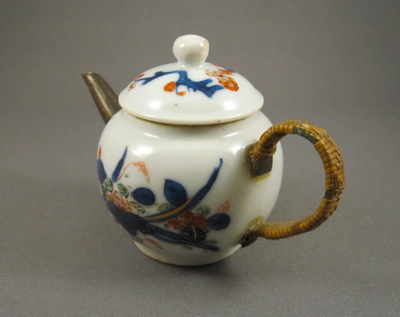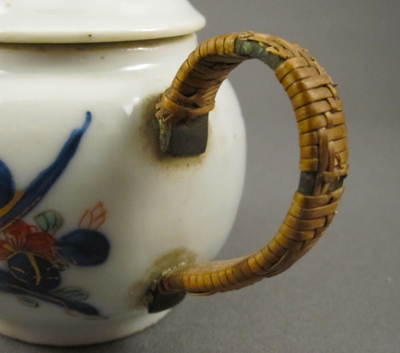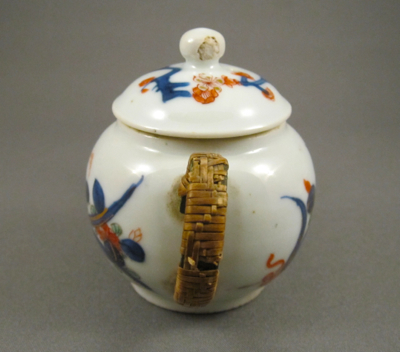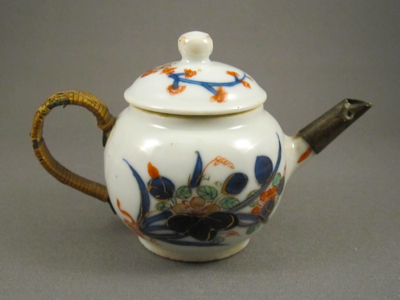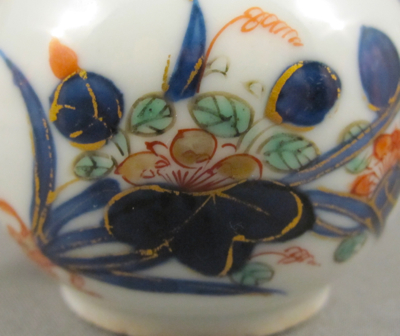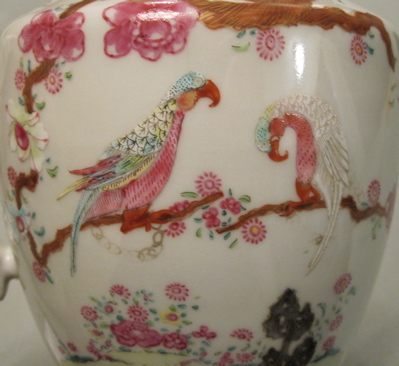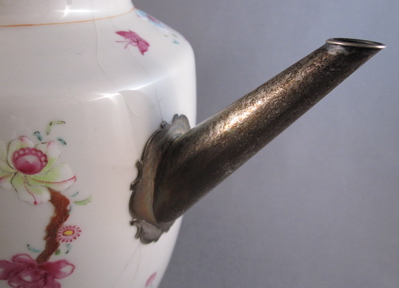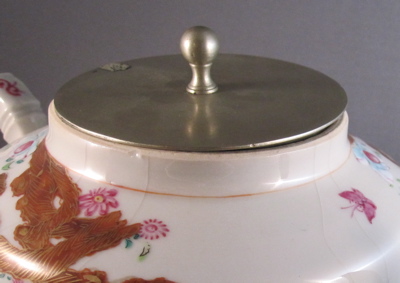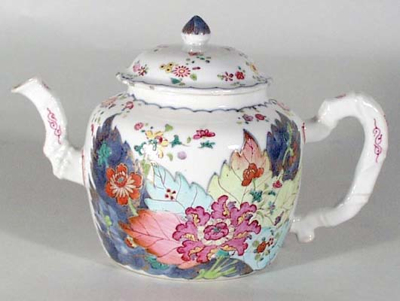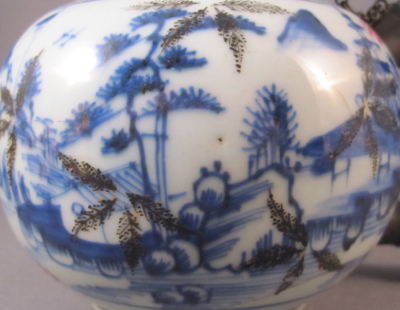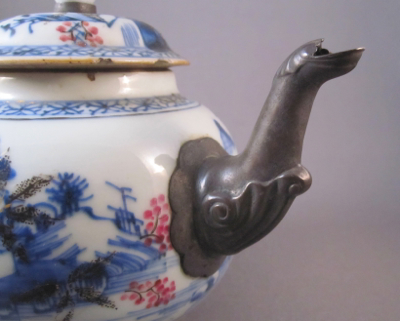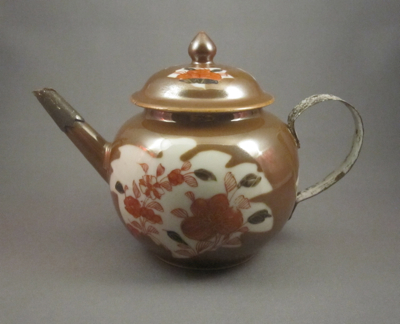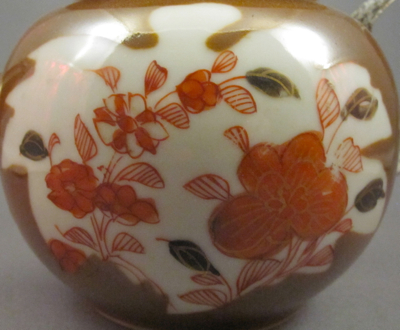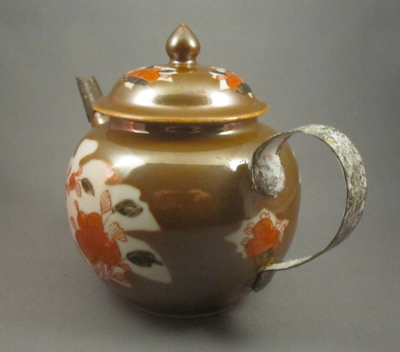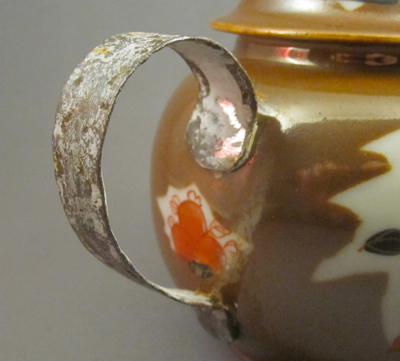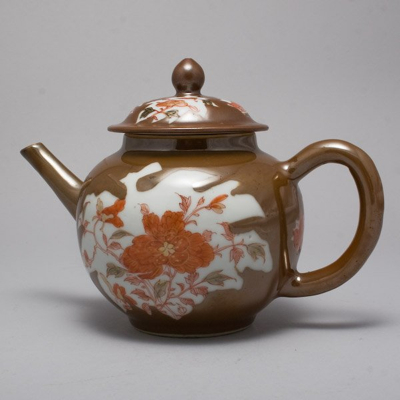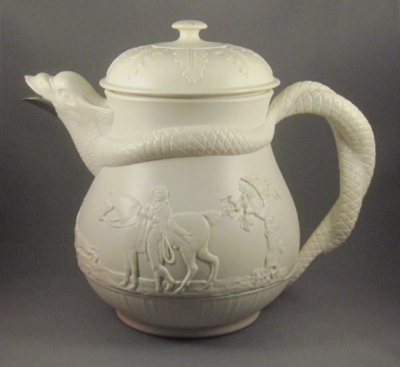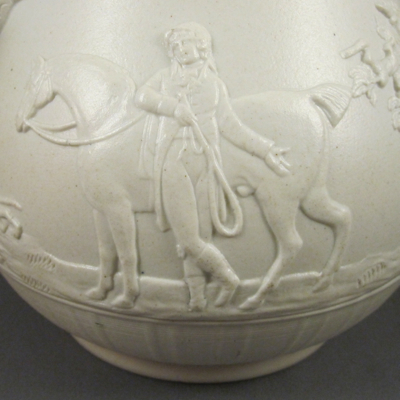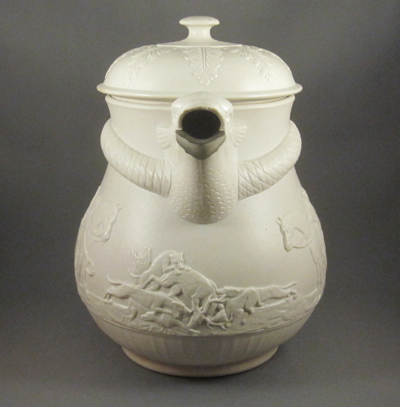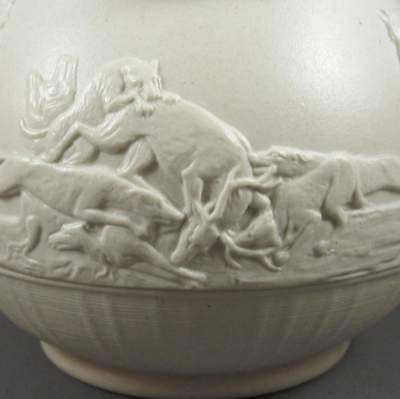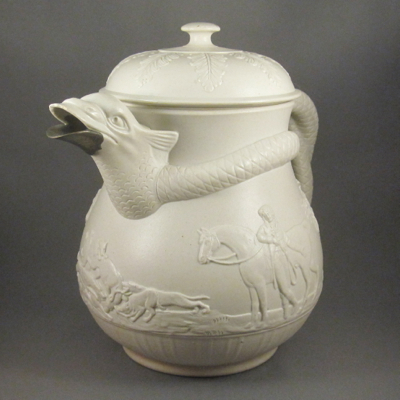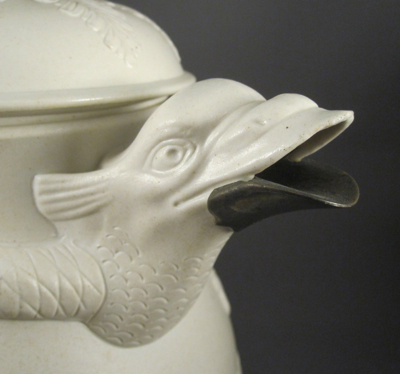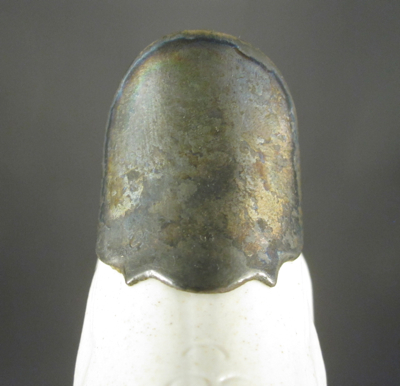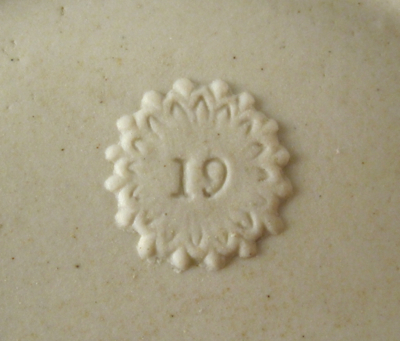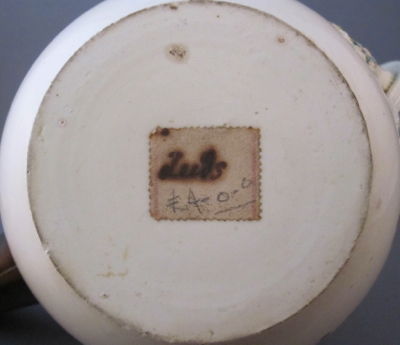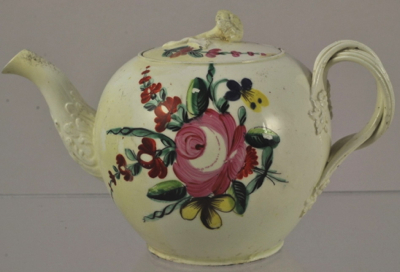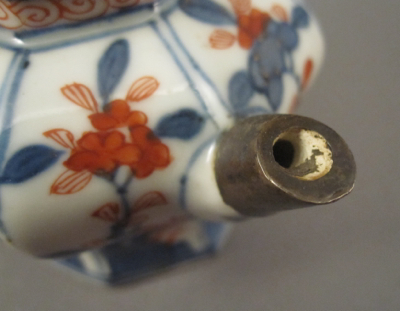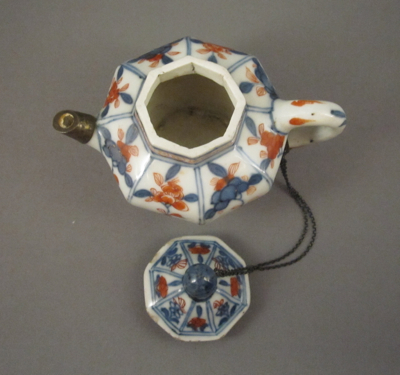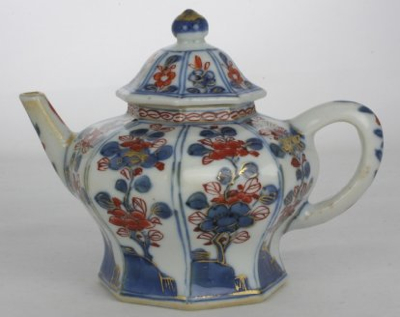This handsome Castleford-style teapot with neoclassical design was made in England in the early 1800s. It is made of fine-grained unglazed black basalt stoneware with a hinged lid set in a scalloped rim and fastened with a metal pin. It measures 5-1/2″ tall and 8-3/4″ from handle to spout. Two different classical tableaux in detailed relief are on each paneled side, with acanthus leaves at the top and the bottom.
When this teapot was dropped over 150 years ago, the spout broke in two places and the knob came undone. Typically, fragile lids on teapots with this design snap off so I am surprised that this lid remains intact. A 19th century tinker repaired all of the broken bits by attaching two metal sleeves around the breaks in the spout and riveted on a new metal replacement knob. The metal repairs were originally painted black to blend in with the black basalt color of the pot, but time and age have peeled away the paint, leaving a pleasing patina to the metal. There is a later putty repair to a crack on the underside which is useless now, but I imagine it served its purpose at the time it was applied.
This example with nearly the same form, shows what the original spout and knob would have looked like on my teapot.
Photo courtesy of D. G. Barsby Antiques



